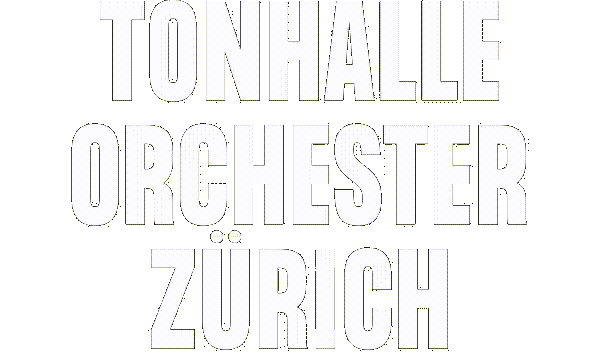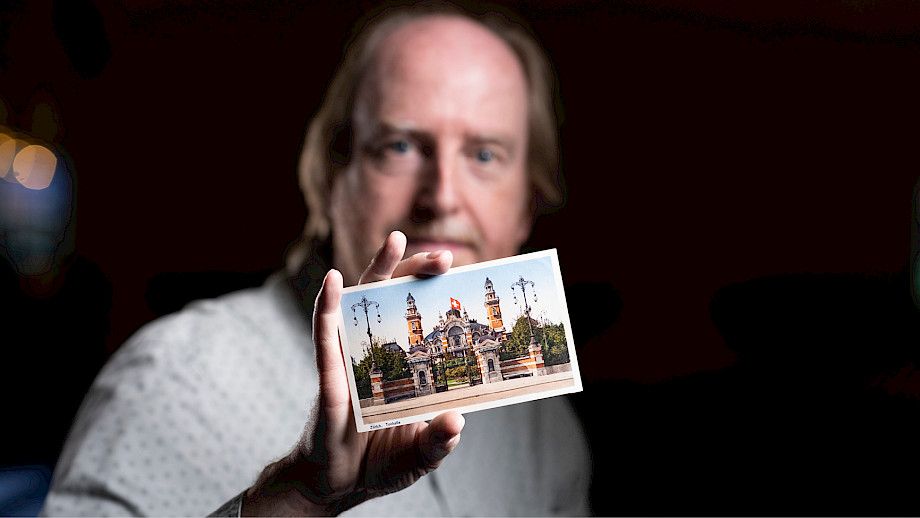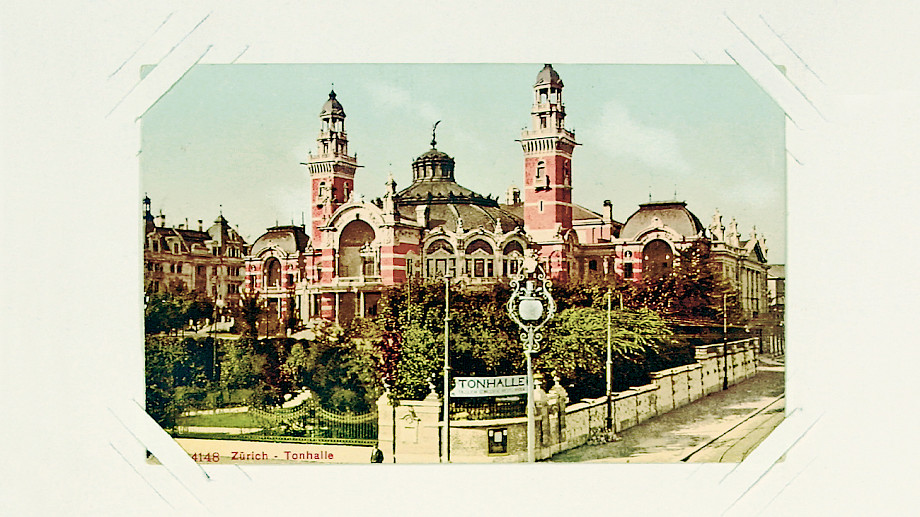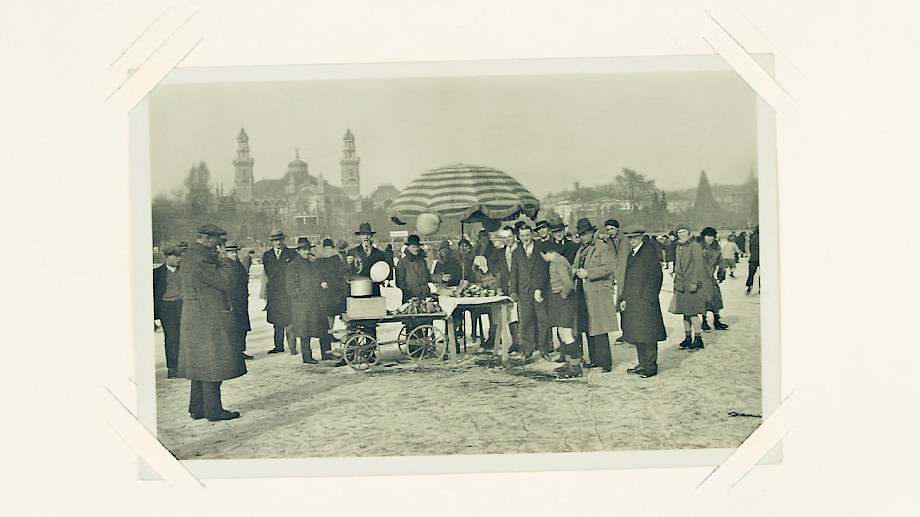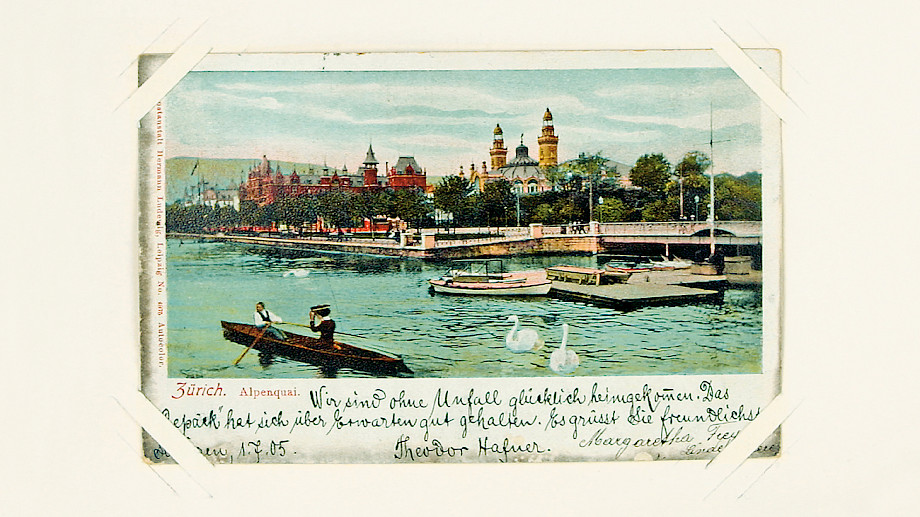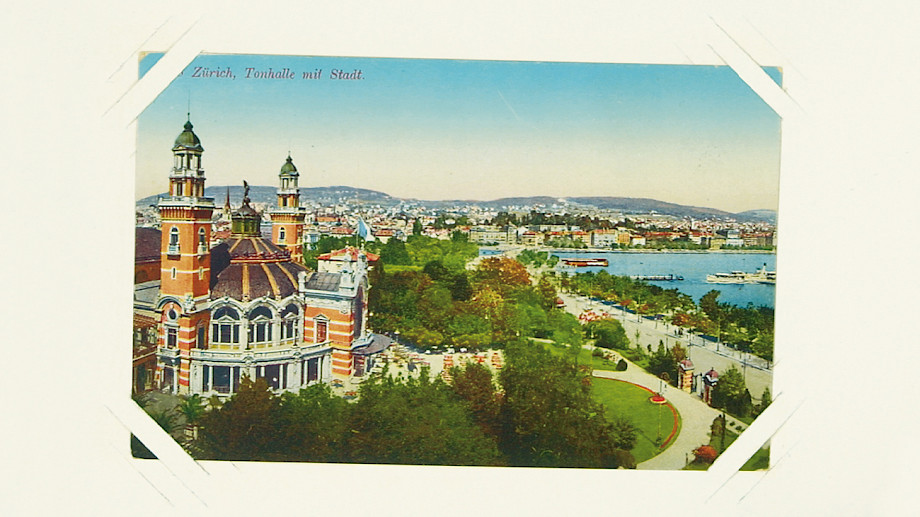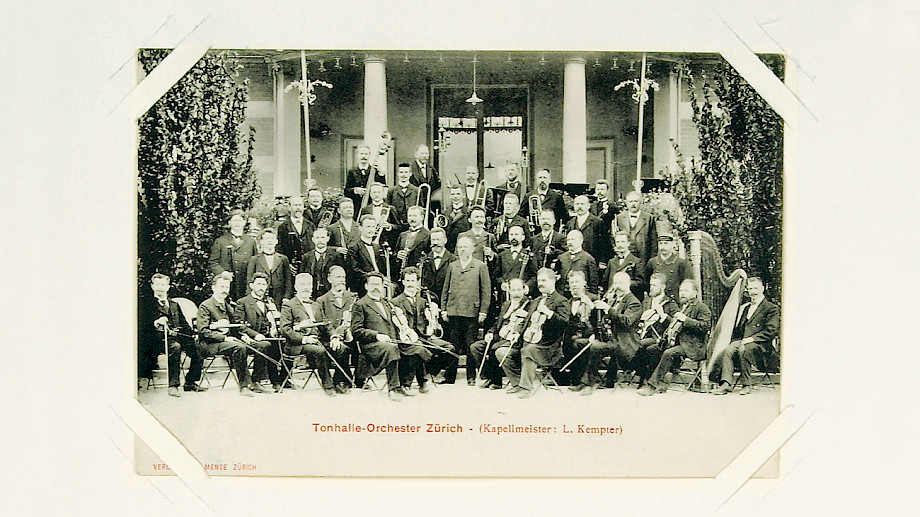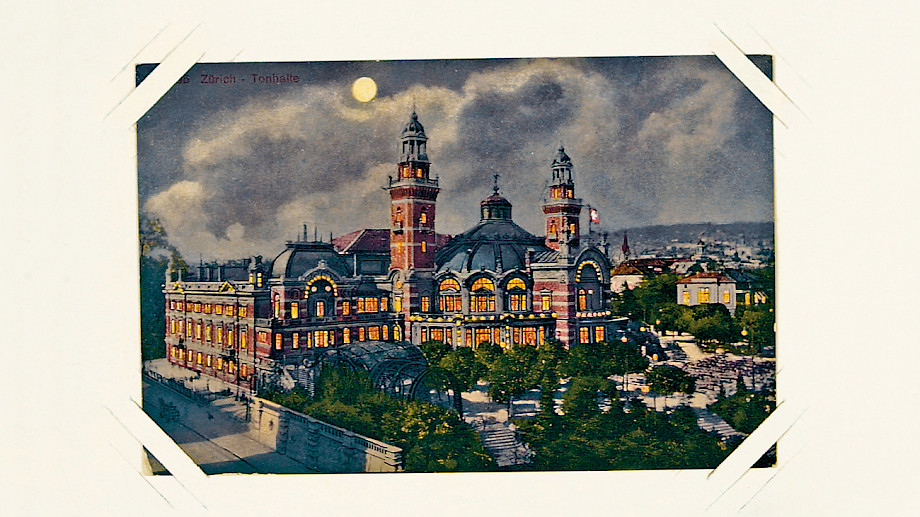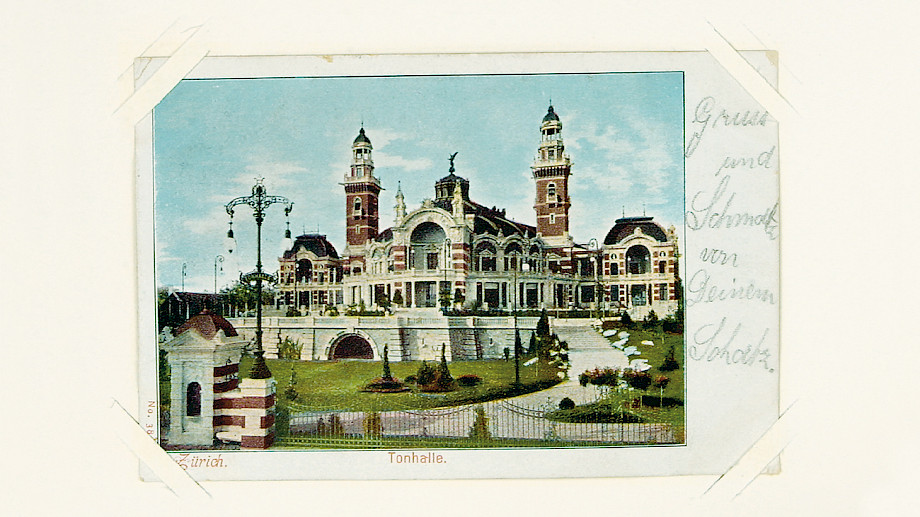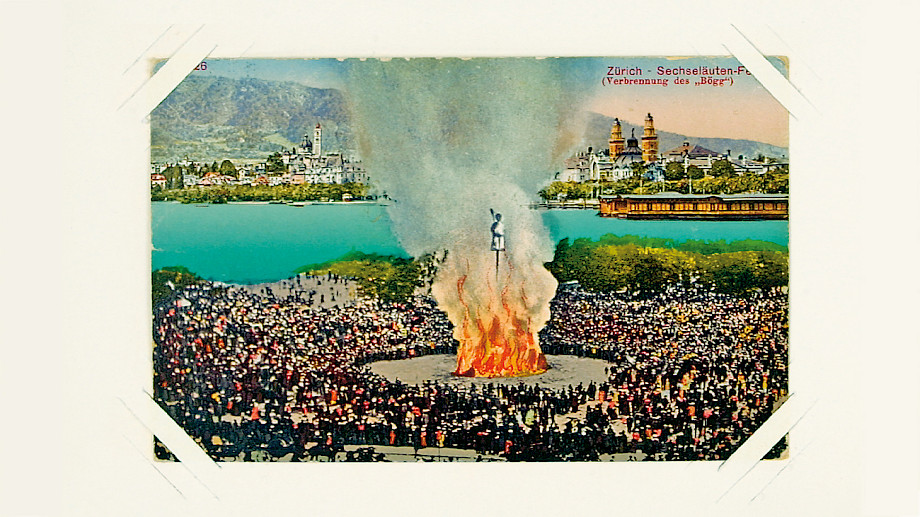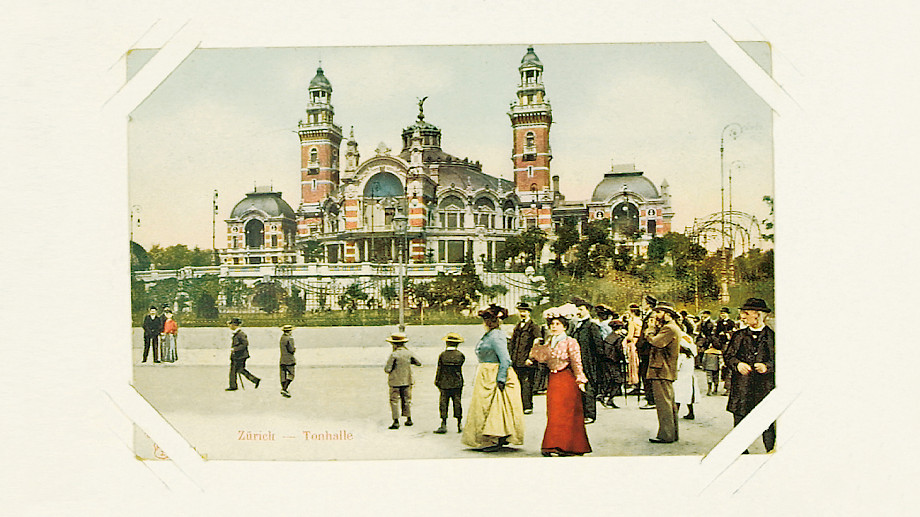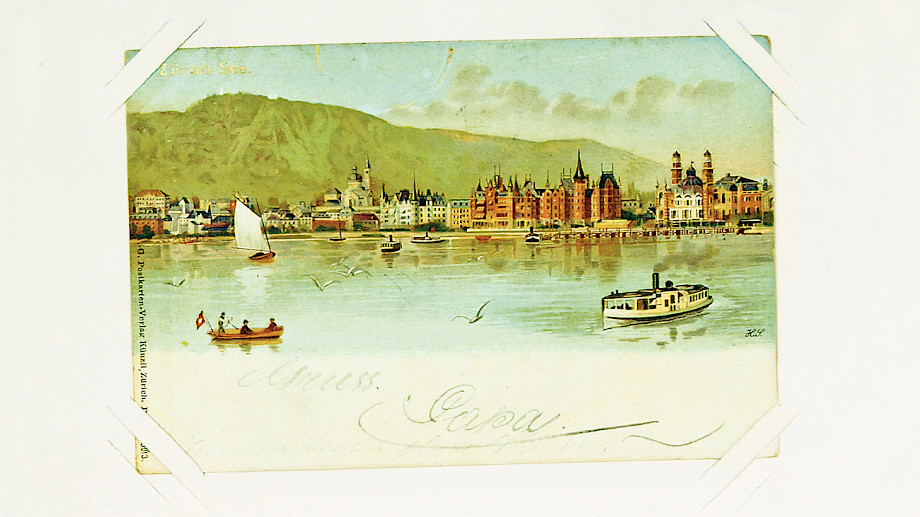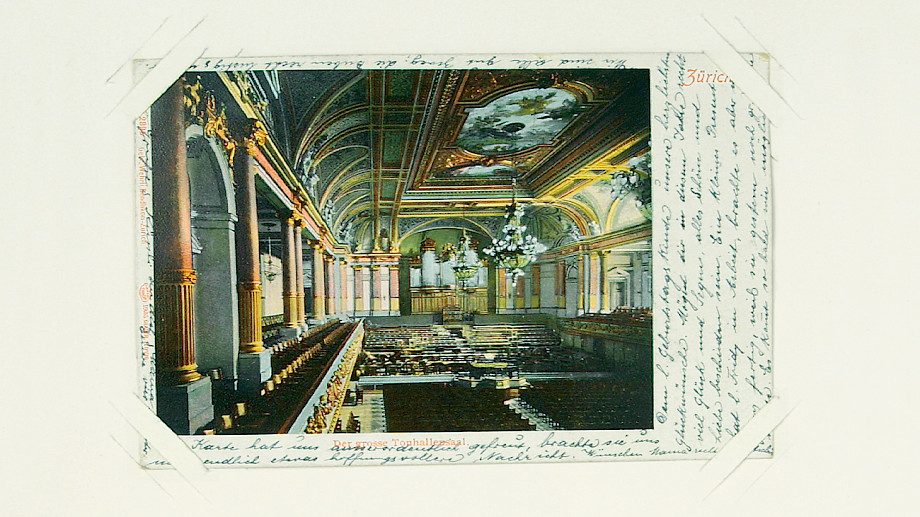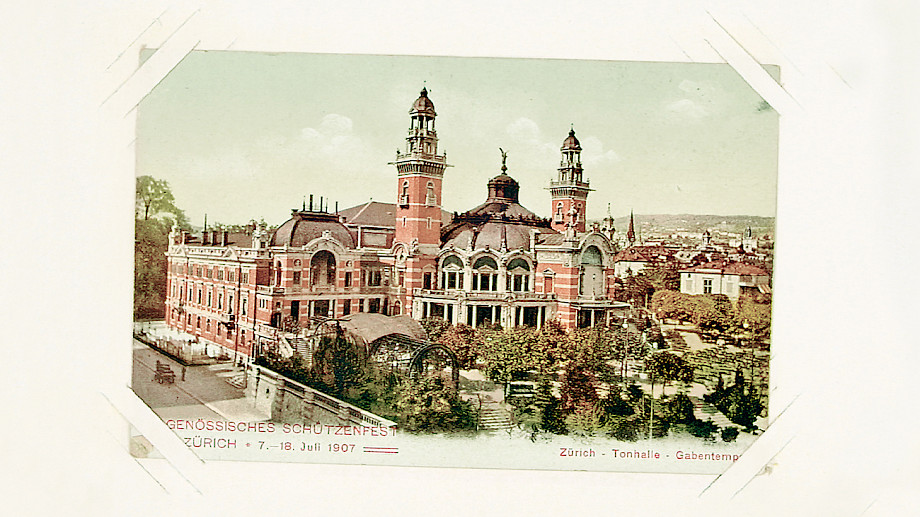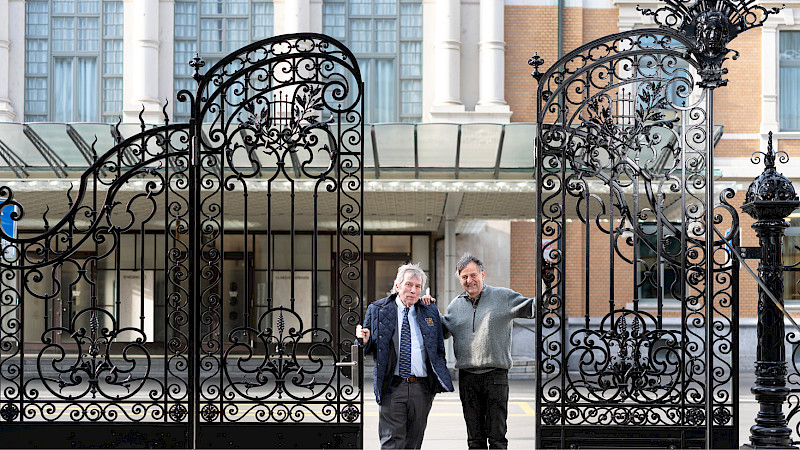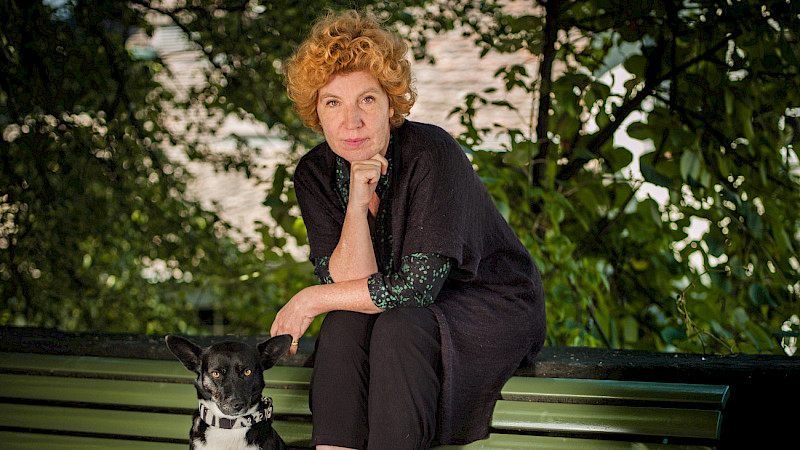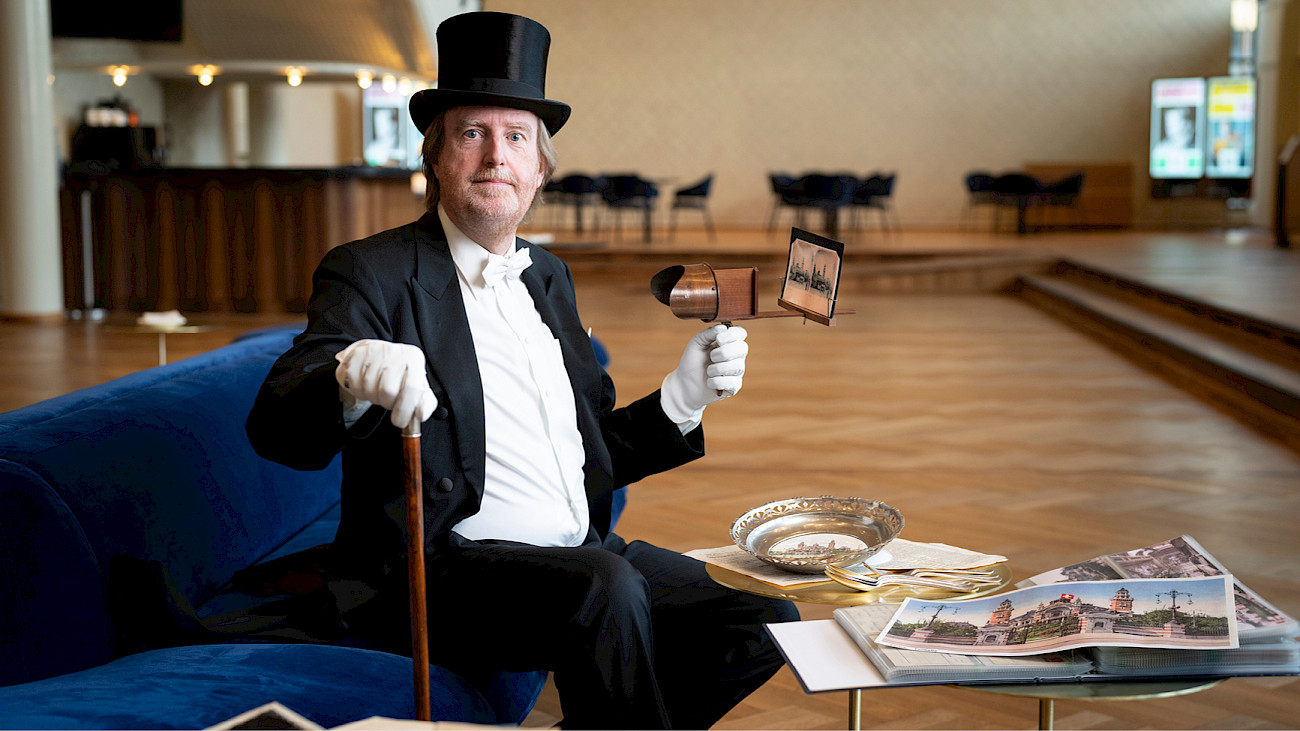
With Warm Greetings from the Tonhalle
Richard Kessler is a violist in the Tonhalle-Orchester Zürich. And he is a meticulous collector of treasures relating to the history of his second home, the Tonhalle.
A fruit bowl, cutlery and stacks of books. Folders full of copies and postcards - 400 in number. A top hat and a walking stick. Richard Kessler sets up and presents bizarre and adorable things in front of him in the concert foyer. For example, a peepshow from around 1900, the period that fascinates the violist so much. Why is that? Because he likes to make up stories about how people must have lived back then, when the Tonhalle Zurich was opened in 1895.
And because he is interested in architectural history. The answer seems obvious to him: "This building and its history are close to my heart," he says, because he has been playing in the orchestra for more than a quarter of a century. But his collecting instinct was awakened in his first years in the orchestra, when he was still new in Zurich – by a discovery in the chess room, a lounge of the orchestra. There hung a view of the long since demolished Trocadéro building. Richard Kessler asked a colleague what a beautiful building it was, and from then on he regularly went to the Saturday flea market on Bürkliplatz and searched for clues in libraries, second-hand bookshops, at auctions, and today also on the internet.
Skyline from back then
The objects Richard Kessler has with him are all connected to the various stages of the Tonhalle Zurich: the fruit bowl shows the two turrets of the building from 1895, the cutlery contains an engraving of the former Kongresshaus restaurant, the books deal with the architectural history of the building. "The theatre buildings of Fellner and Helmer" is one of them, he flips out what he is looking for in a flash, the work is very present. The wife of one of the two architects had been present at an opera fire in Vienna, where there was a panic as the audience fled. For this reason, the doors to the Tonhalle hall were opened from the inside to the outside, a modern safety measure for the time.
The copies, which Richard Kessler has neatly filed in folders, were made in the architectural history archive. They show various exterior and interior views of the Tonhalle and the Kongresshaus, so that with a little patience the development of every corner can be traced. Parties were held in the pavilion, "which was probably a disaster acoustically, an oval hall, very difficult". Richard Kessler flips out a picture showing a cloth on the ceiling - "to improve the acoustics". A picture in the small hall before the demolition shows how household goods were sold, "maybe my cutlery was lying around there too?" He is particularly fascinated by the postcards. Some of them have texts that do not tell about concerts in the Tonhalle, as one might assume, but sometimes simply represent an appointment or a greeting from Zurich. "Red Castle, White Castle, Tonhalle. What a skyline!" This was simply Zurich's landmark, Richard Kessler surmises – and thus available on postcards in vast quantities.
The early views also show the old gate, which has now found its new place opposite the main entrance to the Tonhalle.
A trip into the past
The views show early cars, strolling people in clothes that hint at the twenties. Richard Kessler says he would like to escape to that time for a few hours, perhaps take part in the social life around the concert business on the terrace of yesteryear: "One person told me his grandparents met there, isn't that nice?" Postcards from the time of the Seegfrörni in 1929, when the turrets of the old Tonhalle were still there, are particularly popular and often seen, which is another reason why they are among Richard Kessler's favourites: "I'm a bit at war with modernism." He has little sympathy for the elements of the New Building style to which the old Tonhalle had to make way, for this kind of economisation.
Stage people, displaced in time
On the older views from General- Guisan-Quai, the old gate of the Tonhalle Zurich can also be seen, which has now found its new place opposite the main entrance, something Richard Kessler is particularly pleased about: "I think it's so beautiful how they've derusted it, that they've invested money and love - that's appreciation." In pictures, he thinks he can make out missing busts that were on an earlier view: "I wonder where they are? On some mantelpiece?" There must be a lot more material that could have suffered the same fate as the gate. Richard Kessler knows from former managing director Jürg Keller, for example, that he received a wing door from the vestibule to the first floor as a souvenir on his retirement.
Richard Kessler suspects that there is another reason behind his love of collecting, which has to do with the walking stick and the top hat. They belonged to his grandfather, whom he never knew personally. His name was also Richard Kessler. He was born in Berlin in 1875, he was 60 when Richard Kessler's father was born, and he always talked a lot about the world he lived in. Born in Berlin in 1875, he was 60 when Richard Kessler's father was born; he always talked a lot about the world he lived in. Berlin at the turn of the century, he too was a stage person, but more in terms of lyrics: His grandfather wrote libretti for operettas. He was on the road a lot, and Richard Kessler is sure that he stood on stage with his top hat. Berlin was a centre for operettas, his grandfather had worked on many material, rewritten or composed them himself; he had worked with people like Walter Kollo and Eduard Künneke, and was also close friends with Christian Morgenstern, Rainer-Maria Rilke and the actor Max Reinhardt. The stories surrounding this man make Richard Kessler think particularly fondly of the time when the old Tonhalle was built.
Translated with DeepL.com
More about the Tonhalle Zurich
for 85 years, the gate to the old Tonhalle was lost. Now it has been restored to its former glory - in front of the Club Baur au Lac, only a few metres away from its original location. To the story
